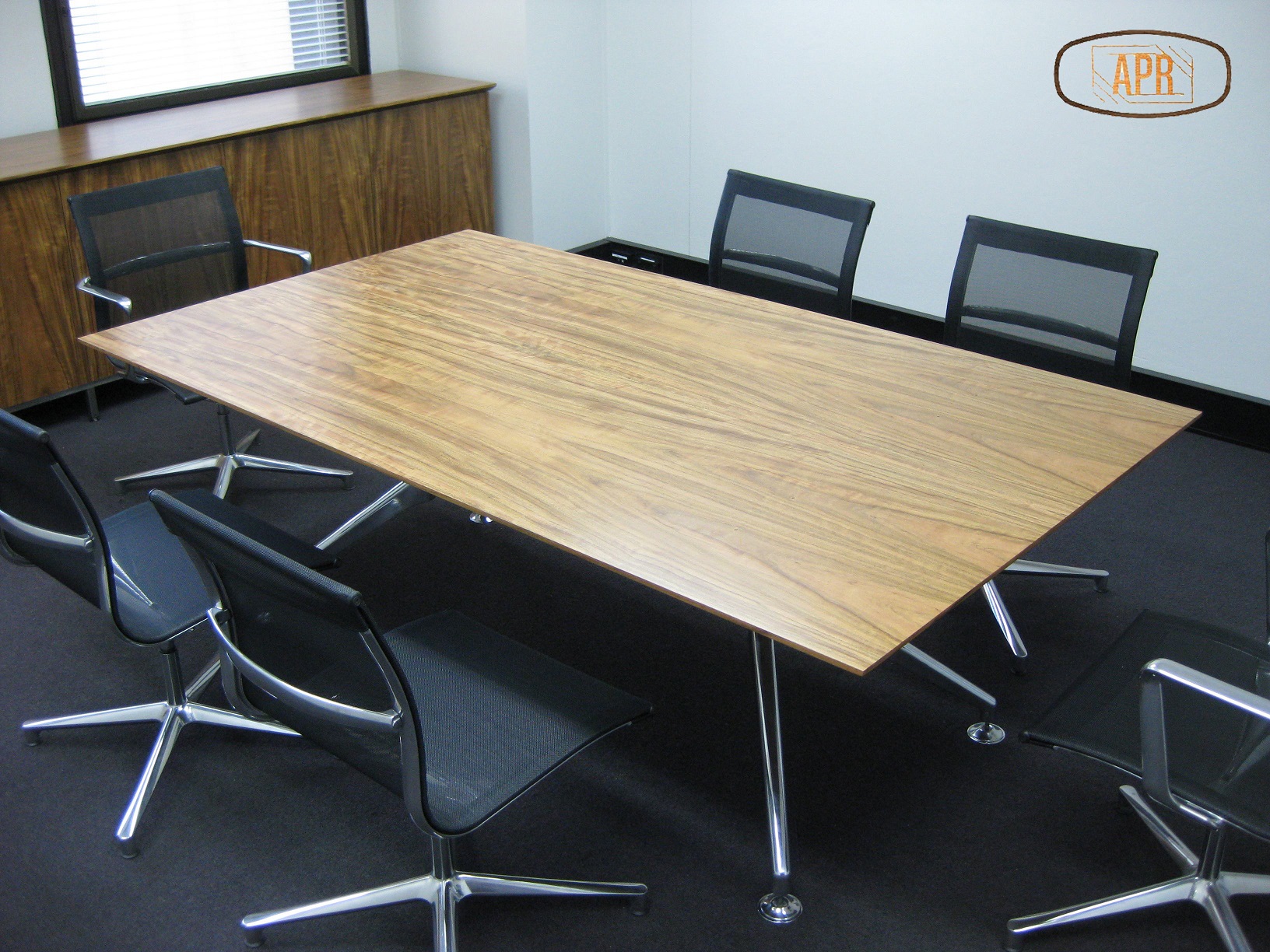In this month’s blog, we’re proud to feature an editorial supplied by the Timber Veneer Association of Australia’s (TVAA’s) technical representative Peter Llewellyn. Peter has a wealth of knowledge and experience with timber veneers and provides unbiased technical advice on a range of issues related to our much-loved beautiful, natural and unique timber veneers. We thank Peter and the TVAA for their ongoing support of our industry.
There is a perception that a timber veneered surface is delicate and not able to stand up to wear. However, the wear resistance of veneered furniture and similar items is largely a function of the surface coating.
Oils and waxes, when used alone, may be subject to marking by heat and liquid spillage. However, if applied over a polyurethane base they can five a satin sheen to the surface while the polyurethane provides protection.
Scandinavian oil, rubbed into a 3-coat base of matt polyurethane, gives a super smooth oil-rubbed finish. The oil is worked in lightly with 400 wet or dry paper, followed by rubbing along the grain with a pad of household steel wool that is thoroughly we with oil. The surplus is then removed with a soft clean cloth.
If this sounds like too much trouble, or the area is too large for hand finishing, pre-finished veneers are available that come with a cured, hard, durable, clear coating. These coatings are factory-controlled in a way that is difficult to achieve in the workshop, giving consistency across projects.
Other advantages of pre-finished veneers are that they are more scratch-resistance that ordinary polished veneers and specifiers can see the final appearance of the veneer before making a selection. Looking at raw veneer does not reveal how it will look with a finish applied.
With pre-finished veneers there are savings in time, risk and money plus confidence about how the final product will look.
Application of coatings on site or in the workshop must be in accordance with the manufacturer’s instructions and away from draughts, dust, moisture and other contaminants.
It’s also important to remember that both sides of a veneered panel or door must be sealed to provide a ‘balanced’ component. Panels not sealed in this way may bow or cup.
Technical notes about the various finishes for timber veneers can be found in the Timber Veneer Association’s manual titled ‘Veneer’. The manual can be downloaded from the Association’s website at www.timberveneer.asn.au.
Alternatively hard copies of “Veneer” can be obtained free of charge on request to info@timberveneer.asn.au
Matilda Veneer is a proud member of the Timber Veneer Association of Australia. Matilda’s own Anthony Wardrop currently holds the role of Vice-President of the Association.
Image Credit: APR Detailed Joinery. Corporate Table featuring Matilda Veneer’s Queensland Walnut with two pac polyurethane



